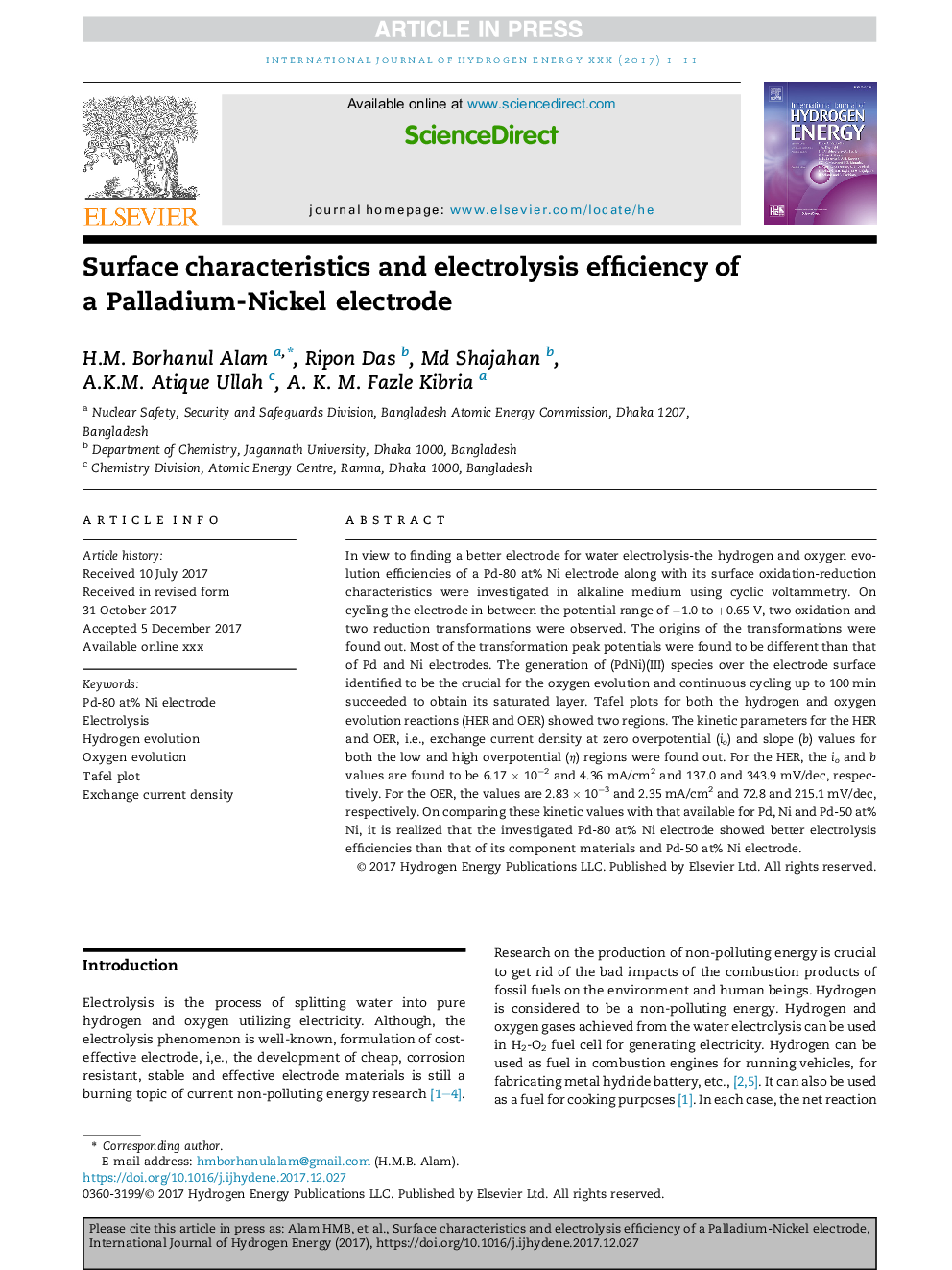| Article ID | Journal | Published Year | Pages | File Type |
|---|---|---|---|---|
| 7708085 | International Journal of Hydrogen Energy | 2008 | 11 Pages |
Abstract
In view to finding a better electrode for water electrolysis-the hydrogen and oxygen evolution efficiencies of a Pd-80 at% Ni electrode along with its surface oxidation-reduction characteristics were investigated in alkaline medium using cyclic voltammetry. On cycling the electrode in between the potential range of â1.0 to +0.65 V, two oxidation and two reduction transformations were observed. The origins of the transformations were found out. Most of the transformation peak potentials were found to be different than that of Pd and Ni electrodes. The generation of (PdNi)(III) species over the electrode surface identified to be the crucial for the oxygen evolution and continuous cycling up to 100 min succeeded to obtain its saturated layer. Tafel plots for both the hydrogen and oxygen evolution reactions (HER and OER) showed two regions. The kinetic parameters for the HER and OER, i.e., exchange current density at zero overpotential (io) and slope (b) values for both the low and high overpotential (η) regions were found out. For the HER, the io and b values are found to be 6.17 Ã 10â2 and 4.36 mA/cm2 and 137.0 and 343.9 mV/dec, respectively. For the OER, the values are 2.83 Ã 10â3 and 2.35 mA/cm2 and 72.8 and 215.1 mV/dec, respectively. On comparing these kinetic values with that available for Pd, Ni and Pd-50 at% Ni, it is realized that the investigated Pd-80 at% Ni electrode showed better electrolysis efficiencies than that of its component materials and Pd-50 at% Ni electrode.
Related Topics
Physical Sciences and Engineering
Chemistry
Electrochemistry
Authors
H.M. Borhanul Alam, Ripon Das, Md Shajahan, A.K.M. Atique Ullah, A. K. M. Fazle Kibria,
